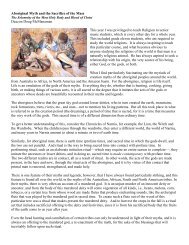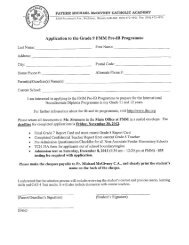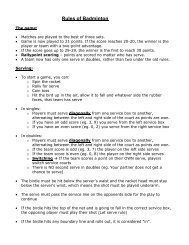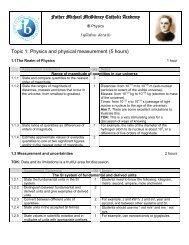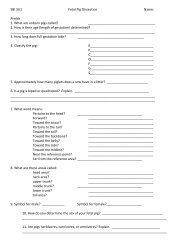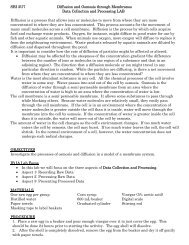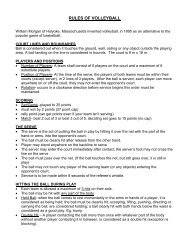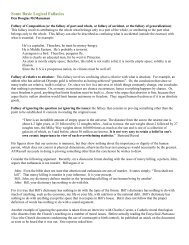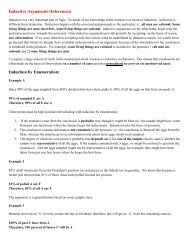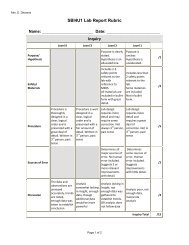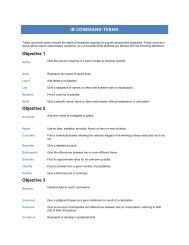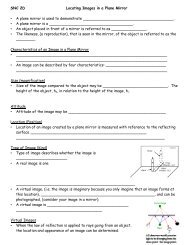Chemistry Review Manual 2
Chemistry Review Manual 2
Chemistry Review Manual 2
You also want an ePaper? Increase the reach of your titles
YUMPU automatically turns print PDFs into web optimized ePapers that Google loves.
2. The Ideal Gas Law<br />
2.1 The Gas Laws<br />
At low pressures all gases have the same behavior in the following sense:<br />
1) With pressure and temperature fixed, the volume of the gas is proportional to the number of<br />
particles (atoms in the case of a monatomic gas such as Ne, or molecules in the case of a<br />
molecular gas such as CO 2 ). The proportionality constant is the same for all gases. This is<br />
Avogadro’s Law:<br />
V = constant × n<br />
2) If temperature is increased, with pressure fixed, the volume increases in proportion to the<br />
temperature (provided the temperature is measured on the absolute scale). This is Charles’<br />
Law:<br />
V = constant × T<br />
3) If pressure is increased, with temperature fixed, the volume decreases inversely with the<br />
pressure. This is Boyle’s law:<br />
V = constant / p<br />
4) If temperature is increased, with volume fixed, the pressure increases in proportion to the<br />
temperature. This law follows from Charles’ and Boyle’s Laws:<br />
p = constant × T<br />
Note that each of these laws has a different constant that depends on the values of the fixed<br />
properties.<br />
These observations are encapsulated in the ideal gas law:<br />
pV<br />
= nRT<br />
2.1<br />
where R = 8.314 J mol -1 K -1 = 0.08206 L atm mol -1 K -1 is the gas constant. Gases that obey this<br />
law are said to be ideal. The law is valid at low pressure for all gases because, under these<br />
conditions, the atoms or molecules are so far apart that forces between them have no significant<br />
effect on the pressure of the gas.<br />
The first observation allows us to determine the molar mass of a gas by measuring the mass of a<br />
known volume of the gas at known temperature and pressure.<br />
Example 2.1: Suppose a 1.000 L sample of a gas at 1.000 atm pressure and 293.0 K has a<br />
mass of 1.830 g. What is the molar mass of the gas?<br />
Approach: Solve for the amount of gas. Divide mass by amount to give the molar mass of<br />
the gas.<br />
The amount of gas is determined, from pV = nRT, by<br />
pV<br />
n = =<br />
RT<br />
= 0.04159 mol<br />
−1 −1<br />
0.08206 L atm mol K 293.0 K<br />
1<br />
1.000 atm × 1.000 L<br />
×<br />
Page 14 of 88



